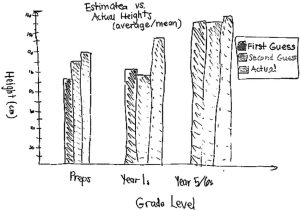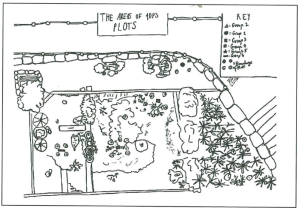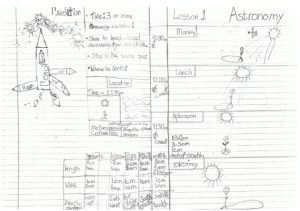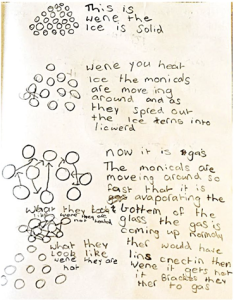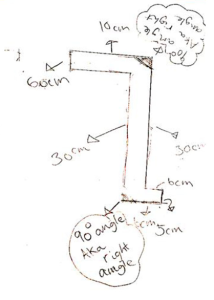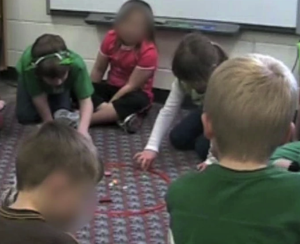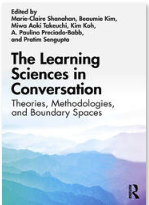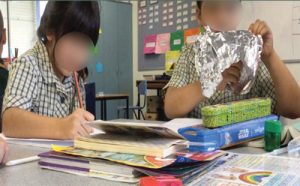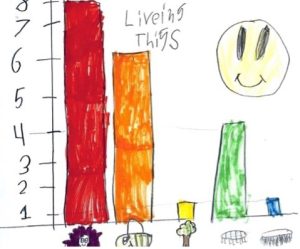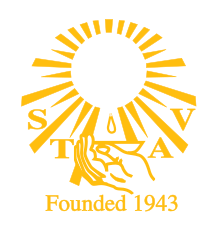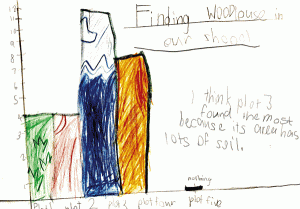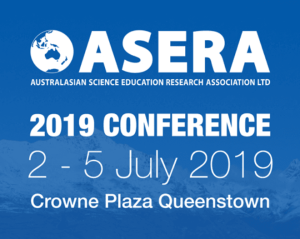Theory to Practice

Abstract
This article illustrates one of several learning sequences from the Interdisciplinary Mathematics and Science (IMS) Learning project, connecting science and mathematics learning in the primary school. Investigating Body Height involved a series of investigations conducted in Grades 5 and 6 across six classes in one school. The project teachers implemented an enquiry-based pedagogical model to collect, organise, analyse and represent data about students’ heights. Statistical ideas and various forms of graphical representation were developed well beyond curriculum expectations.
Download pre-print copy of the publication
https://imslearning.org//wp-content/uploads/2022/06/Accepted-APMC-Investigating-Body-Heights-Paper.pdfCite
Mulligan, J., Kirk, M., Tytler, R., White, P., & Capsalis, M. (2022). Investigating students’ heights through a data -modelling approach. Australian Primary Mathematics Classroom, 27(1), 17–21.

Introduction
Many of the activities involving changes to matter relate to common phenomena, but challenge students to look at them in new ways. In this article we start with activities on dissolving and mixing, highlighting the important distinction, but with both phenomena representing a physical change. We follow with some chemical change activities which also involve ‘mixing’ of substances but in these cases, new materials are formed, with different properties. The formation of a gas in an acid-base reaction is an example of this or burning which involves a reaction between oxygen and a substance to form, for instance, carbon in the case of organic material, and carbon dioxide. Distinguishing between physical and chemical changes is not always easy, particularly if you do not have access to the concept of atoms and molecules. You can get several surprising effects from chemical reactions. In the early and middle school years, only simple reactions are appropriate, such as that between sodium bicarbonate (baking powder) and vinegar (or any mild acid) to produce carbon dioxide. This reaction is the basis for many intriguing activities, with effects that depend on the gas production. Cooking provides some excellent examples of both physical and chemical change and is a useful and popular activity in classrooms. In the ‘kitchen science’ section of this topic you can focus on techniques for observing and understanding the changes that occur in cooking and use some novel recording strategies.
Download pre-print copy of the publication
https://imslearning.org//wp-content/uploads/2021/06/LetsFindOut.Pre-print-Accepted-Article.Tytler-and-White.2021.Dissolving.pdfCite
Tytler, R. & White, P. (2021). Activities for Teaching and Learning about Changes to Matter: Dissolving and Chemical Change. Let’s Find Out.38(4), 8-19

Introduction
The teaching and learning sequence Investigating Light is the focus of this article and was conducted in Grade 5/6 as partof the Australian Research Council (ARC) funded Interdisciplinary Mathematics and Science (IMS) Learning Project (Tytler,et al. 2018-2021). This sequence is aligned to the Victorian Science curriculum. In response to the challenge of providing authentic, accessible, and engaging science learning experiences for students during remote learning, this iteration of the Investigating Light sequence was developed in consultation with teachers, toensure student accessibility in the online learning context. Relatable to students, the activities were adapted from the Deakin University Ideas for Teaching Science P-8 (https://blogs.deakin.edu.au/sci-enviro-ed/early-years/). Reflecting an interdisciplinary focus, this sequence included opportunities for students to investigate with both science and maths in engaging and complimentary ways (See table 1.). For instance, students are challenged to explore angles, rotation and light directionality in their periscope designs, and the relationship between shadow size and the distance from the light source, when investigating shadow puppets in the ‘Shadow Play Investigation’ lesson.
Download pre-print copy of the publication
https://imslearning.org//wp-content/uploads/2021/06/Lets-Find-Out-Article.prepublication.Investigate-Light.pdfCite
Kirk, M., Tytler, R. & White, P. (2021). Investigate Light: An accessible and engaging, open-ended enquiry design adaptable for remote learning and classroom learning. Let’s Find Out. 38(4). 25-43.

Download pre-print copy of the publication
https://imslearning.org//wp-content/uploads/2021/06/Mulligan-et-al-2021-IMS-project-APMC.pdfCite
Mulligan, J. T., Kirk, M., Tytler, R., & White, P. (2021). Connecting mathematics and science through an Interdisciplinary Mathematics and Science ( IMS) project in the primary school. Australian Primary Mathematics Classroom, 26(3), 29-31.
New pedagogies for interdisciplinary STEM
Russell Tytler of Deakin University sheds light on the direct teaching versus inquiry debate in the Science and Mathematics space.
“Current advocacy of Science, Technology, Engineering and Mathematics (STEM) represents a reform movement to increase engagement of students with the STEM disciplines, and to develop STEM skills that will prepare students for life in the 21st century. Such skills overlap with generic competencies that are increasingly represented in global curriculum framing (OECD – Organisation for Economic Co-operation and Development, 2018), such as complex and creative problem solving, critical thinking, design thinking, mathematical reasoning, interpersonal and collaborative skills, and trans-disciplinarity.”
Read the full article at Education Matters.
Journal Articles and Book Chapters
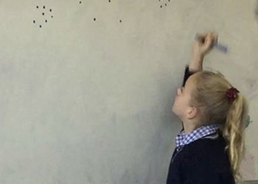
Abstract
There is a long tradition of teaching science through inquiry, with broad agreement about the form it should take. Students should investigate researchable questions; gather and analyse data; and develop and represent evidence-based claims. Authoritative teacher or textbook representations are generally used to guide this learning (Buckley & Boulter, 2000; Bybee, 1997; Furtak et al., 2012; Sell et al., 2006). Parallel to this approach, teachers have also guided students to construct, review and refine their own representations, leading to learning gains. However, this student representation construction approach poses new challenges for teachers. The teacher is expected to elicit and guide students’ reasoning about their own represented claims as an orientation to understanding and learning scientific forms of reasoning and their representation. In this paper, drawing on our initial account of this pedagogy, we aim to clarify further this approach’s rationale and teacher strategies and underlying purposes in key early stages of exploration in the topics of chemistry and mathematics with a Grade 5 class. An interdisciplinary focus was used to guide students’ learning about the science concepts of states of matter, evaporation and the mathematical concepts of formal and informal measurement and data representation. Analysed data included video capture of the teacher’s guidance of tasks and classroom discussion, student artefacts and teacher and student interviews. We identify how the teacher framed the task, oriented student inquiry and guided evaluation of students’ representations through implicit and explicit instruction.
Cite
Prain, V., Xu, L. & Speldewinde, C. Guiding Science and Mathematics Learning when Students Construct Representations. Research in Science Education. 53, 445–461 (2023).
Publisher / DOI
10.1007/s11165-022-10063-9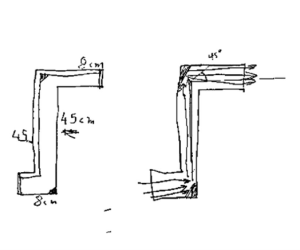
ABSTRACT
There is a growing interest in the value of teachers guiding students to generate their own representations to support conceptual learning in science and across complementary subjects such as mathematics. However, this approach to an interdisciplinary focus poses challenges for programme design and learning assessment. In this paper, we report on a 10-week study with a class of Year 5 students designed to (a) facilitate learning of key concepts in the topic of optics (e.g. reflection), and (b) make meaningful links between these concepts and relevant mathematical ones (e.g. symmetry and angles). Students were expected to construct, evaluate and refine representations to explain various experienced phenomena. We report on an assessment framework developed and applied to student work. Our findings indicate (a) some subject and interdisciplinary learning gains, and (b) specific challenges around designing this kind of programme, student learning assessment and teacher understanding to support this learning.
Cite
Xu, L., Prain, V. & Speldewinde, C. (2021). Challenges in designing and assessing student interdisciplinary learning of optics using a representation construction approach, International Journal of Science Education, 43(6), 844-867.
Publisher / DOI
10.1080/09500693.2021.1889070
Abstract
The multimodal nature of knowledge development and learning in science is now increasingly recognized. While researchers have focused on identifying how different representational modes afford meaning-making, the question of how students are guided to link, confirm and expand similar and different meanings across modes, called ‘transduction’, has been less explored. This transduction process is fundamental to students realizing, aligning, generating and coordinating meanings across representations to learn concepts and processes in science. In this paper we focus on a learning sequence in primary school astronomy designed around representational work to explore the teacher’s key role in supporting student transduction. In the Interdisciplinary Mathematics and Science (IMS) project we developed a pedagogy with stages of orienting, posing representational challenges, evaluating and building consensus, and applying and extending conceptual understanding. We use micro-ethnographic analysis of the teacher’s strategic framing and interactions with students and their artifacts to: (1) identify what enables student transduction of meanings as they engage with material and representational work, and (2) the role of the teacher in anticipating and addressing challenges for students in integrating meanings across multiple, multimodal representations of astronomy phenomena.
Cite
Tytler, R., & Prain, V. (2022). Supporting student transduction of meanings across modes in primary school astronomy. Frontiers in Communication, 7, 863591.
Publisher / DOI
10.3389/fcomm.2022.863591
Abstract
In light of discussions about the benefits and tradeoffs of integrated STEM education, we present a case that focuses on an apparently promising context for integrating mathematics and science. First- and second-graders observed changes in prairie plants over a year and sought a way to locate their plants in the prairie, as a planned prairie burn would soon destroy the top growth. They agreed to use compasses and pacing to write directions from a common landmark to the plants. Later, the class attempted to reinterpret their conceptions of location and wayfinding in the context of two new representations: a 2-dimensional map and a hoop on the floor that depicted the outline of the prairie. During this conversation, children struggled to integrate their memories of distance and unit-length, experienced within the prairie, to inscriptions that presented an external perspective of the same space. Some problems appeared to stem from the authenticity of the task, which inspired solutions that disrupted the teacher’s mathematical agenda. To promote STEM education, educators need to be aware of the task solutions that children are likely to invent, thoroughly address children’s understanding of representational conventions, and select tasks in which model-test and revision play a prominent role.
Cite
Lehrer, R., Schauble, L. Stepping Carefully: Thinking Through the Potential Pitfalls of Integrated STEM. Journal for STEM Educ Res 4, 1–26 (2021).
Publisher / DOI
10.1007/s41979-020-00042-yAbstract
The hybridization of disciplines in transdisciplinary STEM fields is an ongoing process that occurs over time, and it is often generated by epistemic dialogue among disciplinary practitioners as they negotiate representational innovations that assist new forms of inquiry. As professionals increasingly take on these challenges, educators wonder how best to leverage synergies between disciplines in instruction for children, especially in ways that avoid effacing the distinctiveness of disciplined ways of knowing. Children’s experiences of distinctions and synergies between disciplines constitute a prospective phenomenology of epistemic dialogue. An illustrative case study traces how positioning second- and third-grade children to participate in shared practices of representation across disciplines of mathematics and sciences helped reveal common means of making and revising knowledge, yet also generated opportunities for children to notice and reflect upon disciplinarily distinctive ontologies governing these common systems of representation. Innovations in mathematical representation were spurred by inquiry about natural systems, and perspectives about natural systems were ineluctably altered as children employed their emerging mathematical innovations to understand the world. These forms of activity expanded children’s imaginations about the nature of disciplined knowing.
Cite
Lehrer, R. (2021). Promoting transdisciplinary epistemic dialogue. In M-C. Shanahan, B. Kim, M.A. Takeuchi, K. Koh, A. Paulino Preciado-Babb, & P. Sengupta (Eds.). The learning sciences in conversation: Theories, methodologies, and boundary spaces. (pp 27-38). New York: Routledge.
Publisher / DOI
9781003089728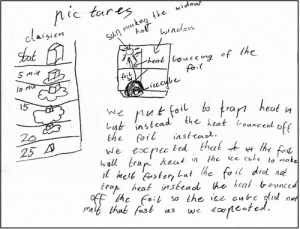
ABSTRACT
Although education research in critical thinking is a rapidly emerging field, how teachers can facilitate, monitor, and support critical thinking in primary science remains a challenge. This paper builds on recent semiotics-mediated scientific reasoning research to present a fresh perspective of critical thinking in primary science. Analysis of student and teacher interactions in an innovated semiotics-grounded learning design and pedagogy demonstrates a recursive process of collaborative construction, reviewing and refinement of representational systems and models. The multimodal epistemic practices of the discipline, involving the generation, evaluation and refinement of the semiotic systems that frame scientific ideas and practices are presented to both stimulate and support generative critical thinking. How semiotic systems in primary science can provide a focus, stimulus, and tool, for not only students’ generative critical thinking but also teacher monitoring and support is presented.
Cite
Publisher / DOI
10.1080/13540602.2023.2191181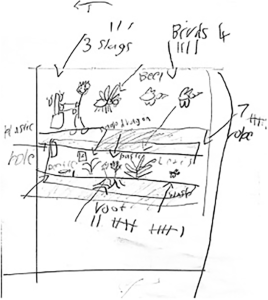
Abstract
This paper illustrates how years 1 and 2 students were guided to engage in data modelling and statistical reasoning through interdisciplinary mathematics and science investigations drawn from an Australian 3-year longitudinal study: Interdisciplinary Mathematics and Science Learning. The project developed learning sequences for 12 inquiry-based investigations involving 35 teachers and cohorts of between 25 and 70 students across years 1 through 6. The research used a design-based methodology to develop, implement, and refine a 4-stage pedagogical cycle based on students’ problem posing, data generation, organisation, interpretation, and reasoning about data. Across the stages of the IMS cycle, students generated increasingly sophisticated representations of data and made decisions about whether these supported their explanations, claims about, and solutions to scientific problems. The teacher’s role in supporting students’ statistical reasoning was analysed across two learning sequences: Ecology in year 1 and Paper Helicopters in year 2 involving the same cohort of students. An explicit focus on data modelling and meta-representational practices enabled the year 1 students to form statistical ideas, such as distribution, sampling, and aggregation, and to construct a range of data representations. In year 2, students engaged in tasks that focused on ordering and aggregating data, measures of central tendency, inferential reasoning, and, in some cases, informal ideas of variability. The study explores how a representation-focused interdisciplinary pedagogy can support the development of data modelling and statistical thinking from an early age.
Cite
Mulligan, J., Tytler, R., Prain, V. & Kirk, M. (2023). Implementing a pedagogical cycle to support data modelling and statistical reasoning in years 1 and 2 through the Interdisciplinary Mathematics and Science (IMS) project. Mathematics Education Research Journal.
Publisher / DOI
10.1007/s13394-023-00454-0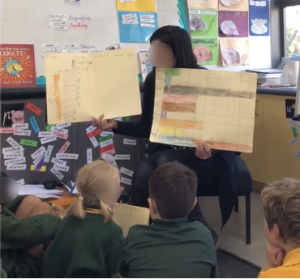
Abstract
Growing research evidence indicates student learning gains from guided representation construction/invention in school science and mathematics. In this inquiry approach, students address challenges around what features of a phenomenon/problem to attend to, what data to collect, how and why, and make collective judgments about multimodal accounts of phenomena. However, researchers to date have tended to focus on student learning rather than on the teacher’s role in guiding various phases of inquiry. In this paper we report on: a) analysis of Grade 1 students’ engagement in interdisciplinary mathematics and science inquiry practices in a classroom sequence in ecology; b) the teacher’s role in guiding such inquiry; and c) interpretation of these practices in terms of support of student transduction (connecting and remaking meanings across representations in different modes). Data from our study included video capture of two case-study teachers’ guidance of tasks and classroom discussion, and student artefacts. We examine the classroom processes through which the teachers used students’ invention and revision of data displays to teach the concepts of living things, diversity, distribution and adaptive features related to habitat in science. Mathematical processes included constructing and interpreting mapping, measurement and data modelling, sampling, and using a scale. The analysis offers fresh insights into how teachers support student learning in these two subjects, through discrete stages of orienting, representation challenge, building consensus, and applying and extending representational systems.
Cite
Tytler, R., Prain, V., Kirk, M.,Mulligan, J., Nielsen, C., Speldewinde, C., White, P., & Xu, L. (2022). Characterising a representation construction pedagogy for integrating science and mathematics in the primary school. International Journal of Science and Mathematics Education.
Publisher / DOI
10.1007/s10763-022-10284-4While astronomy is commonly taught in primary schools, there is abundant evidence of the persistence of misconceptions of astronomical phenomena. A core difficulty for students is the need to coordinate earth and space-centred perspectives in visualising and explaining astronomical phenomena. This chapter will describe an astronomy lesson sequence with 150 students from six Grade 1 (age 6 years) classes across two schools. The sequence links science with mathematics, with representation construction and modeling as core approaches to learning. Key features of the sequence were students’ construction and coordination of spatial representations. These were connected with the changes/movements in shadows (patterns) throughout the day and with the movement of the sun in the sky and with earth’s rotation in relation to the sun to explain day and night. The mathematics focus was on spatial reasoning including representations of length, rotation and angle, pattern representation, and temporal reasoning. Pre- and post-test data and student interviews showed considerable shifts in understanding of day and night and earth-sun relations. Analysis of the video data, and field notes, showed the complexity of concepts and spatial reasoning required, as well as the power of an interdisciplinary, guided inquiry pedagogy involving the construction, comparison and evaluation of concepts and representations.
Download pre-print copy of the publication
https://imslearning.org//wp-content/uploads/2022/01/IMS-Pedagogy.pdfCite
Tytler R., White P., Mulligan J. (2021) Visualisation and Spatial Thinking in Primary Students’ Understandings of Astronomy. In: Levrini O., Tasquier G., Amin T.G., Branchetti L., Levin M. (eds) Engaging with Contemporary Challenges through Science Education Research. Contributions from Science Education Research, vol 9. Springer, Cham.
Publisher / DOI
10.1007/978-3-030-74490-8_23
Abstract
Against a backdrop of advocacy for but concerns about interdisciplinary STEM curricula, this paper explores the design principles underpinning a three-year longitudinal research project that develops and evaluates interdisciplinary mathematics and science learning sequences, involving more than 30 teachers and 300+ students in cohorts across the primary school years. The research uses design-based methodology and deploys a pedagogical cycle (orienting, posing representational challenges, evaluating and building consensus, applying and extending representations) based on representation construction and model-based reasoning, reflecting core disciplinary processes, and aimed at foundational concepts. The interdisciplinary structure of sequences in different topics, teacher pedagogy, and student reasoning and learning are illustrated through three learning sequence vignettes, drawing on micro-ethnographic video analysis of classroom activity, student interviews and pre-and post-tests. In these topics both mathematical learning (measure, data modeling and spatial reasoning) and science learning (astronomy, ecology and flight concepts, and practices), were reinforced and enriched through the interdisciplinary framing. Drawing on field notes and recordings of teacher planning and review meetings for these sequences, coupled with the classroom data, we identify a) the design features through which mathematics and science can productively interact, b) the challenges in working with teachers to achieve interdisciplinary alignment, and c) the key pedagogical features that emerged to support this integration. We identify design challenges associated with curriculum alignment, teacher expectations and epistemological orientations to learning in mathematics. The research contributes to conceptualising how interdisciplinary processes in mathematics and science teaching and learning can be effectively framed and enacted at scale.
Cite
Tytler, R., Mulligan, J. T., Prain, V., White, P., Lu, L., Kirk, M., Neilsen, C., Speldewinde, C., (2021). An interdisciplinary approach to primary school mathematics and science learning. International Journal of Science Education. 43, 1926–1949.
Publisher / DOI
10.1080/09500693.2021.1946727Conference Presentations
Linking Mathematics and Science Productively
Russell Tytler1, Peta White1, Melinda Kirk1, Joanne Mulligan2
1Deakin University, 2Macquarie University
The Interdisciplinary Mathematics and Science (IMS) project has developed, trialed and refined learning sequences across years 1-6 that productively link mathematics with science in ways that enhance fundamental learning in each subject. The principles of this interdisciplinary linking include: there is fresh learning of foundational constructs in both subjects; each subject enhances learning in the other; and attention is given to progression of knowledge and skills. A central feature of the sequence design is attention to authentic disciplinary epistemic practices through students inventing, evaluating and refining representations. We will draw on a Grade 2 sequence in paper helicopter flight that involves mathematical constructs of measure, variation, and data modeling, to a). illustrate the interdisciplinary design principles and how they operate to enhance learning, and b). explore the challenges for teachers in implementing such interdisciplinary learning. These challenges relate to: teacher pedagogy, epistemology, and knowledge; the need to flexibly interpret and anticipate curriculum progression; and the lack of support in traditional mathematics curriculum practice for this epistemic vision. We will explore the variation in ways in which the mathematics and science interrelate in the different sequences.
Download pre-print copy of the publication
https://imslearning.org//wp-content/uploads/2021/09/IMS-ASERA-2021_RT.pdfhttps://www.mathunion.org/icmi/conferences/icme/icme-14-2021
https://www.mathunion.org/icmi/conferences/icme-international-congress-mathematical-education
Accepted presentation and paper
Young students learning the mathematics of measurement through an interdisciplinary approach
Peta White1, Russell Tytler1, Joanne Mulligan2, Melinda Kirk1
1Deakin University, 2Macquarie University
There is increasing criticism of STEM activities as often trivialising mathematics as merely a computational tool. This chapter describes the situating of mathematics in an interdisciplinary setting where practices of measure (area and height), sampling, variation and data modeling are interwoven with science concepts in ways that mutually reinforce learning. We demonstrate the effect of consecutive learning sequences in ecology (Grade 1), then fast plant growth (Grade 2), through a pedagogy that involves students’ invention, comparison/evaluation, and refinement of mathematical representations, with strong teacher guidance. The sequences were followed by several classes and their teachers, across two schools, with video capture, lesson observations, and tracking students’ representations in pre- and post-tests and student work samples. Teachers and case study students, across two schools, were interviewed at the end of each sequence. These sequences, and the findings, have much to say about productive inquiry-based mathematics pedagogy, and about the circumstances under which interdisciplinary practice can lead to robust mathematical learning of measure.
20th November 2020
I wonder why? Make Maths and Science come alive
Prof. Russell Tytler and Dr. Peta White
Exploring Maths through Science – learning while doing. Hands on activities that promote curiosity in learners to explore and understand the ‘why’.
Download presentation (coming soon)
STAVCON 2020: A Vision for the Future
https://stav.org.au/event/stavcon-2020/
Online November 27, 2020 @ 8:45 am – 4:30 pm
Interdisciplinary Mathematics and Science Learning
Russell Tytler & Peta White, Deakin University
This is an international, longitudinal project which aims to investigate the effectiveness of an innovative interdisciplinary learning approach in mathematics and science. Through collaborating primary schools in Victoria and the United States of America (USA), we have investigated how student’s invention and transformation of representational systems can connect to support deeper reasoning and learning.
The pedagogy focused on student’s construction of diagrammatic and textual representations, measurement and data displays, through the following sequence of processes
1. Material engagement / observation / measurement
2. Representation challenge / invention
3. Comparative review / sharing / evaluation
4. Review/ refinement / application to new settings
Teaching and learning sequences (grade 1- 6) are freely available online and use student work samples to exemplify lesson strategies.
Download Presentation (coming soon)
Watch video of presentation (coming soon)
Hosted by University of Wollongong Online Conference: June 23-26, 2020
Paper presentation
Planning interdisciplinary maths/science learning sequences for system impact
Authors
- Russell Tytler – Deakin University russell.tytler@deakin.edu.au
- Peta White – Deakin University peta.white@deakin.edu.au
Team: Vaughan Prain, Lihua Xu, Joanne Mulligan, Richard Lehrer, Leona Schauble, Chris Nielsen, Melinda Kirk, Chris Speldewinde
There is increasing pressure on universities to demonstrate the wider impact of their research. As a science education community, we have an established interest in our research influencing teacher practice and beliefs. How can we package our research findings to inform and influence teachers, and systems?
This paper describes long-term design research leading to an interdisciplinary primary mathematics/science learning approach based on students constructing representations, consistent with core disciplinary practices. The particular task on which we are currently focused is that of translating the research findings into effective teacher resources. The paper describes the design stages leading to our current understandings of how to support teachers to adopt the approach with some fidelity. The stages are:
- Long term development of research programs, working with dedicated teachers and tracking student learning, to generate key principles.
- Widening the program to develop interdisciplinary mathematics/science learning sequences, curriculum-aligned, working across schools and teachers, year levels and topics.
- Identifying key features of the pedagogy and challenges to teachers’ beliefs and practices that need to be addressed.
- Codifying the approach, and sequence structures, to provide clarity on what is at stake, in ways attentive to teachers’ busy lives and competing interests.
Paper presentation
Exploring innovative pedagogies through interdisciplinary mathematics and science learning in the primary school
Authors
- Russell Tytler – Deakin University russell.tytler@deakin.edu.au
- Peta White – Deakin University peta.white@deakin.edu.au
Team: Vaughan Prain, Lihua Xu, Joanne Mulligan, Richard Lehrer, Leona Schauble, Chris Nielsen, Melinda Kirk, Chris Speldewinde
This paper describes the rationale and pedagogical approach of a 3-year longitudinal study designing and evaluating interdisciplinary mathematics and science learning sequences for Grades 1 through 6 across three schools (https://imslearning.org/). Topics included measuring height, ecology, astronomy, motion, light, flight, chemical science, water, fast plants, and microbiology. The pedagogy involves students’ construction and refinement of diagrammatic and textual representations and the development of measurement and data modelling, reflecting core disciplinary processes. A four-stage pedagogical model was employed:
- Material engagement/observation/measurement: a stimulus and problem opens up generative learning opportunities through establishing a need to collect, interpret and represent data and/or construct explanatory representations of the phenomenon.
- Representation challenge/invention: Students are challenged to invent/construct representations that reflect their measures, interpretations, and explanations.
- Comparative review/sharing/evaluation: The teacher strategically guides sharing/display and comparison/evaluation of the representations.
- Review/ refinement/application to new settings: Students refine or revise their representations, or respond to new and related challenges.
The paper draws on video data and interviews to illustrate each stage, and examine the variety of ways the model is enacted by different teachers in different topics. We report on the key elements of the pedagogy that effectively support learning in both science and mathematics.
Paper presentation
Multiple representations in student learning of optics: An interdisciplinary approach
Authors
- Lihua Xu, Deakin University, Geelong, lihua.xu@deakin.edu.au
- Christopher Speldewinde, Deakin University, Geelong, christopher.speldewinde@deakin.edu.au
- Vaughan Prain, Deakin University, Geelong, vaughan.prain@deakin.edu.au
There is a growing interest in the roles of multiple representations (MRs) in teaching science and of student generated representations (e.g. drawings) in facilitating student conceptual understanding in various science topics. This study examines intertextual and contextual meaning making afforded by multiple representations constructed by primary students in an optical unit over a ten-week period. The tasks in the sequence were designed to facilitate meaningful connections between concepts in science (e.g. reflection) and in mathematics (e.g. angles). The pedagogy involves students’ construction, refinement and evaluation of representations and models to describe and explain experienced phenomena. This presentation reports the analysis of student work generated from the sequence, verbal accounts provided by the teacher and the students in interviews and video records of classroom interactions. The findings from this study demonstrate the value of this interdisciplinary approach in engaging students in core disciplinary practices in mathematics and science and in enabling them to make meaningful connections between these two curriculum areas.
Tytler, R., White, P., & Mulligan, J. (accepted). Visualisation and spatial thinking in primary students’ understandings of Astronomy. In O. Levrini, G. Tasquier, T. Amin, L. Branchetti, & M. Levin (Eds.). Selected papers from the ESERA conference 2019. Springer.
Abstract: Astronomy is commonly taught in primary schools, with an initial focus on explaining day and night, the solar system and seasons. However, there is abundant evidence that students going into secondary and even tertiary studies in astronomy have limited understanding and indeed misconceptions of astronomical phenomena. A core difficulty for students is the need, in visualizing/explaining astronomical phenomena, to coordinate earth and space centred perspectives and representations. This presentation will describe lesson sequences conducted in 3 schools, over 12 classes, focused on Grades 1 and 4 (Ages 6 and 10) children’s visualization of day and night from earth and space perspectives. The sequence is part of a project that links science with mathematics through representation construction and modeling as core approaches to learning. Key features of the sequence were children’s construction and coordination of spatial representations that linked the changes/movements in shadows (patterns) throughout the day with the movement of the sun in the sky and with earth’s rotation in relation to the sun to explain day and night, and the pedagogy employed by teachers to build on children’s representations to establish common understandings. The mathematics focus was on spatial reasoning including representations of length, rotation and angle, pattern representation, and temporal reasoning. Data included children’s artefacts, pre- and post-tests, field notes and video capture of key lessons, and student and teacher interviews. The pre- and post-test data and children’s interviews showed considerable shifts in children’s understanding of day and night and earth-sun relations. Analysis of the video data, and field notes, showed the complexity of concepts and spatial reasoning for children, and the power of a guided inquiry pedagogy involving the construction and comparison/evaluation of representations. The study provides fresh insights into the challenges presented in constructing flexible understandings of astronomical phenomena based on the coordination of spatial and temporal representations from different perspectives.
Our paper “Use Of Visual Representations In Astronomy Education: Issues, Affordances And Research Perspectives” has been accepted for presentation at the 2019 ESERA Conference.
Visualisation and spatial thinking in primary (elementary) students’ understandings of astronomy
Russell Tytler and Peta White (Deakin Univ.), Joanne Mulligan (Macquarie Univ.)
Astronomy is commonly taught in primary schools, with an initial focus on explaining day and night, the solar system and seasons. However, there is abundant evidence that students going into secondary and even tertiary studies in astronomy have limited understanding and indeed misconceptions of astronomical phenomena. A core difficulty for students is the need in visualising/explaining astronomical phenomena, to coordinate earth and space centred perspectives and representations. This presentation will describe lesson sequences conducted in 3 schools, over 12 classes, focused on Grades 1 and 4 (Ages 6 and 10) children’s visualisation of day and night from earth and space perspectives. The sequence is part of a project that links science with mathematics through representation construction and modeling as core approaches to learning. Key features of the sequence were children’s construction and coordination of spatial representations that linked the changes/movements in shadows (patterns) throughout the day with the movement of the sun in the sky and with earth’s rotation in relation to the sun to explain day and night, and the pedagogy employed by teachers to build on children’s representations to establish common understandings. The mathematics focus was on spatial reasoning including representations of length, rotation and angle, pattern representation, and temporal reasoning. Data included children’s artefacts, pre- and post-tests, field notes and video capture of key lessons, and student and teacher interviews. The pre- and post-test data and children’s interviews showed considerable shifts in children’s understanding of day and night and earth-sun relations. Analysis of the video data, and field notes, showed the complexity of concepts and spatial reasoning for children, as well as the power of a guided inquiry pedagogy involving the construction and comparison/evaluation of representations. The study provides fresh insights into the challenges presented in constructing flexible understandings of astronomical phenomena based on the coordination of spatial and temporal representations from different perspectives.
Keywords: Astronomy education, visualization and representation, modeling-based learning
Download Presentation
Introduction
Astronomy is taught across school year levels, from primary school foci on night and day and planetary features and exploration, to more complex considerations of moon phases, celestial movement, and cosmology in secondary schools. Yet, research has consistently shown a variety of misconceptions of a diverse range of phenomena such as earth-sun relations, seasons, lunar eclipses etc., despite repeated exposure to teaching. A major problem at each level is the coordination of earth bound perspectives on phenomena and space perspectives. This is essentially a problem of visualization and spatial reasoning involving coordination of different -earth-based and space-based representational systems.
Visualisation is increasingly recognized as central to conceptual learning across a range of sciences (Gilber, 2005), from learning to coordinate visual-spatial sub-micro particle arrangements to explain macro material properties, to the abstracted visualisations of forces and fields governing the movements of objects in space in physics. Underpinning all of these are systems of representation through which we visualize, and coordinate visual and spatial relations, such as diagrams, models and simulations of earth movements, and apparent movement of celestial objects. Thus, we argue that spatial reasoning and visualization through these representations is particularly important for learning challenging astronomy concepts (Hubber et al, 2017; Testa et al., 2017; Tytler et al. 2017).
We are currently engaged in a project exploring interdisciplinary approaches to science and mathematics teaching and learning in primary schools (Interdisciplinary Mathematics and Science IMS: https://imslearning.org/ ), across a range of year levels and topics. The principle underpinning the project is that robust learning involves the invention, evaluation, refinement and coordination of representational systems in science and mathematics, and that through a serious focus on how these science and mathematics systems interrelate, more robust learning of foundational constructs will occur. Our past research indicates that deeper learning in both science and mathematics is achievable when students create and assess representations, make justified claims, and have first-hand experiences of the imaginative challenges and pleasures of these disciplinary processes. Creative and critical reasoning can be developed when students are embedded in contexts of guided inquiry, where they see their overarching learning purpose is to generate, revise, and critique knowledge through making and critiquing representations (Lehrer & Schauble, 2012; Prain & Tytler, 2012, Tytler et al., 2013). In visualizing, creating and analysing representations, data, models, and claims, students need to learn about the varied purposes and specific affordances of different disciplinary representations for imagining, reasoning and claim-making.
In this presentation we describe the planning and implementation of a primary school astronomy unit that focuses particularly on students constructing and coordinating representations to link the movement of shadows over the day, the sun’s position in the sky, night and day, and the rotation of the earth. We link the spatial reasoning processes involved in this work with fundamental reasoning through ideas developed as part of the mathematics curriculum, such as length, rotation and angle, time, and pattern recognition and representation.
Methodology
We worked with 12 teachers of grades 1-4 (ages 6-10) in 3 schools to plan and implement a sequence of 5 lessons focused on students understanding of the sun-earth relations with regard to shadows, daily solar movement, and night and day. Teachers implemented the sequence flexibly and collaboratively according to student needs. The pedagogy focused on children’s guided observations and construction of diagrammatic and textual representations, with class discussion helping children evaluate and refine representational work.
Students spent a day tracking their shadows on the asphalt using a chalk outline, linking this to the apparent movement of the sun in sky – rotation and angle, and linking the sun’s position with the position of the shadow. The changing length of shadows was tracked by a variety of means. A gnome was placed in the yard and it’s shadow traced on poster paper at regular intervals, giving a sense of the continuous change in length and directions. This could then be used in the classroom to model the change in the sun’s position using a torch, and to show how the same results could be had if the earth (poster paper) moved and the sun (torch) remained still. A presentation of the earth’s rotation using video animation was shown and children played with globes and torches to model their shadow results.
Data consisted of children’s productions, field notes and video capture of teaching and learning interactions including children’s collaborative discussion in selected classrooms, a pre- and post-test, and teacher and student interviews. The test included questions on the nature and cause of shadows, the movement of the sun in the sky, and the relation of the sun and earth to cause night and day. Children’s interview questions focused on their changing understandings, their interpretation of the representations, and their response to aspects of the learning sequence.
Findings
In the presentation we will provide examples of children’s work, transcripts and video evidence to illustrate:
- The pre-post test showed significant learning gains for the Grade 1 students in relation to shadow movement related to the sun, and earth rotation. The Grade 4 students had strong pre-test results so the growth was not as clear.
- From field notes and teacher interviews it was clear that children’s understanding of spatial relations between the sun’s movement and shadows required strong framing of embodied reasoning. Through measurement, mapping and embodied action , children achieved a confident sense of the spatial relation of shadow patterns to the sun’s movement across the sky.
- Teachers adapted the sequence to creatively work with models and embodied gestures in response to children’s learning needs.
- Children were confident to describe night and day as being caused by the earth’s rotation. For the Grade 1 children the link between shadows and the globe’s movement was difficult to comprehend, and there was considerable diversity in understandings. Grade 4 children were much more ready to apprehend these relations. A number of misconceptions and their spatial reasoning bases were revealed, that underpin common learning problems in astronomy.
- The challenge for children in coordinating the spatial relations was closely linked with constructs that form the basis of the mathematics curriculum, such as apprehending the change in length related to angle of sun in the sky, rotation of the shadow in relation to earth rotation, and envisaging the shadow position over time as a continuous function of the sun’s tracking.
Discussion and conclusion
This research showed the fundamental importance of students constructing, evaluating and coordinating multiple visual-spatial representations, including 2D drawings, 3D models and embodied gestures, to perceive the spatial relations underpinning earth sun relations relating to shadows, earth bound experience and space perspectives of day and night. It was clear that the representational challenge involved spatial reasoning practices/constructs associated with the mathematics curriculum; measuring, representing, coordinating and interpreting data about shadow length, and spatial reasoning about the change in angle of the sun. Pedagogically, the sequence demonstrated the effectiveness of a guided inquiry, representation construction/modeling approach, with longer term planning involving careful sequencing of representational moves, and short term strategies involving teacher response to student learning needs through embodied strategies and model manipulation. The research has provided fresh insight into the visual-spatial challenges for younger children in learning astronomy, and key strategies for constructing effective learning sequences.
References
Gilbert, J. K. (2005). Visualization in science education. Springer, Dordrecht.
Hubber, P., & Tytler, R. (2017). Enacting a representation construction approach to teaching and learning astronomy. In D. Treagust, R. Duit, & H. Fischer (Eds.), Multiple representations in Physics Education (pp. 139-161). London: Springer.
Lehrer, R., & Schauble, L. (2012). Seeding evolutionary thinking by engaging children in modeling its foundations. Sci Ed, 96(4), 701-724
Lehrer, R., & Schauble, L. (2012). Seeding evolutionary thinking by engaging children in modeling its foundations. Sci Ed, 96(4), 701-724
Prain, V., & Tytler, R. (2012). Learning through constructing representations in science: A framework of representational construction affordances. International Journal of Science Education, 34(17), 2751-2773.
Testa, I., Leccia, S., & Puddu, E. (2014). Astronomy textbook images: do they really help students?. Physics Education, 49(3), 332.
Tytler, R., Murcia, K., Hsiung, C-T., & Ramseger, J. (2017). Reasoning through representations. In M. Hackling, J. Ramseger, & H-L S. Chen (Eds), Quality Teaching in Primary Science Education: Cross-cultural perspectives (pp. 149-179). Dordrecht, Netherlands: Springer. DOI: 10.1007/978-3-319-44383-6_5

“Interdisciplinary Mathematics and Science (IMS) Learning in the Primary School”
http://www.promaco.com.au/events/MERGA/
| Joanne Mulligan Macquarie University | Russell Tytler Deakin University |
The Interdisciplinary Mathematics and Science (IMS) project* (https://imslearning.org/) is developing and investigating an approach to mathematics and science learning that implements learning sequences in which students’ invention and transformation of representational systems in the two subjects can support deeper learning in each. The guided inquiry pedagogy involves students in epistemic practices that approximate those in the discipline, such that concepts that sit at the intersection of the two disciplines (variation, sampling, symmetry, spatial reasoning) are approached from the distinct perspectives of each. The project is tracking students from Grades 1 to 5 from three school contexts longitudinally over 3 years to investigate conceptual and representational competence. Sequences include motion, ecology, astronomy, data modeling, graphing, variability, measurement and spatial reasoning. The presentation will include examples of the interdisciplinary approach, its affordances, and evidence of enhanced student learning.
Download presentation
Research Team: Russell Tytler (Deakin University), Joanne Mulligan (Macquarie University), Peta White, Lihua Xu, Vaughan Prain, Chris Nielsen, Melinda Kirk, Chris Speldewinde, (Deakin University), Richard Lehrer, Leona Schauble, (Vanderbilt University)
*Australian Research Council Discovery Grant No. DP180102333 Enriching mathematics and science learning: an interdisciplinary approach.
Elizabeth Quay image: Samuel Wiki
The Challenge of STEM
Russell Tytler talks to Education Matters about some of the recent innovations in the teaching and learning of STEM in the primary school years.
“Much of this focus is driven by concerns about wealth creation and global competitiveness. This is somewhat at odds, one might think, with the broader education agenda of personal growth in skills and dispositions, and citizenship, emphasised by the Melbourne Declaration. This concern to engage students in STEM pathways and improve the learning of STEM has increasingly extended into the primary school years, given growing evidence that orientations towards the STEM subjects and to STEM thinking working are largely established in the primary and early secondary school years.”
Read the full article at Education Matters.
Paper presentation
Authors
- Russell Tytler – Deakin University (russell.tytler@deakin.edu.au)
- Peta White – Deakin University (peta.white@deakin.edu.au)
- Lihua Xu – Deakin University (lihua.xu@deakin.edu.au)
- Vaughan Prain, Joanne Mulligan, Richard Lehrer, Leona Schauble, Chris Nielsen, Melinda Kirk, Chris Speldewinde
Enriching Maths and Science Learning Through an Interdisciplinary Approach
There has been increasing interest in interdisciplinary as an approach to more deeply engage students, especially as part of advocacy of integrated STEM approaches. However, there are concerns that this integration can do violence to the distinctive ways of knowing and practising represented by the disciplines. The Interdisciplinary Mathematics and Science (IMS) project (https://imslearning.org/) is developing and investigating an approach to primary school mathematics and science that consists of classroom activity sequences in which students’ invention and transformation of representational systems (see Hubber et al., 2010) in the two subjects can support deeper learning in each. In this way the guided inquiry pedagogy involves students in epistemic practices that approximate those in the discipline, such that concepts that sit at the intersection of the two disciplines (variation, sampling, symmetry, spatial reasoning) are approached from the distinct perspectives of each. The project is tracking students longitudinally over 3 years to investigate the development of representational competence. Sequences thus far have included motion, ecology and astronomy, and data modeling, graphing, variability, and geometric reasoning. The presentation will include examples of the interdisciplinary approach, its affordances, and evidence of enhanced student learning. We will also demonstrate the data management system we have generated as a methodological innovation.
Reference
Hubber, P, Tytler, R., & Haslam, F. (2010). Teaching and learning about force with a representational focus: Pedagogy and teacher change. Research in Science Education, 40(1), 5-28.
Download presentation
Developing diagrams and visual representations can lead to huge improvements in student performance and engagement in STEM subjects. Deakin researchers are taking their findings to schools across the country.

